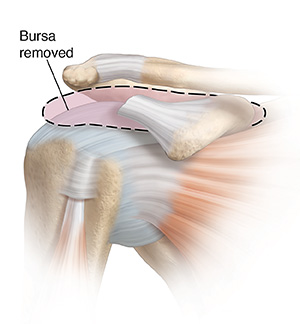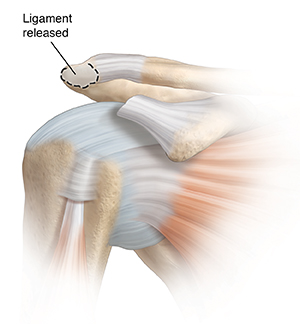Surgery for Shoulder Impingement
For many people, nonsurgical treatments are enough to ease shoulder impingement symptoms. But if these and other treatments haven’t worked, surgery may be an option. Surgery can help free up the joint space, allowing pain-free motion. Talk with your healthcare provider to see if surgery is right for you.
Surgery for shoulder impingement
The type of surgery you have depends on your shoulder problem. Surgery can remove the bursa if it is swollen. If the coracoacromial ligament is tight, it may be released. If the acromion is hooked or has bone spurs, a part of it may be taken out. Before surgery, you’ll be given medicine to keep you free from pain. There are 2 different types of surgery. These are:
-
Arthroscopy. Small cuts (incisions) are made in the shoulder. Next, a small, lighted tool (arthroscope) is inserted. A tiny camera is attached on one end of the arthroscope. The camera sends images to a video screen. This lets the surgeon see inside the shoulder.
-
Open surgery. Incisions are made in the shoulder so the surgeon can work inside.
 |
| A swollen bursa may be removed. |
 |
| A tight coracoacromial ligament may be released. |
 |
| A portion of the acromion may be removed. |
Risks and possible complications of surgery
Your healthcare provider will talk with you about the possible risks and complications of the procedure. These may include:
Online Medical Reviewer:
Raymond Turley Jr PA-C
Online Medical Reviewer:
Stacey Wojcik MBA BSN RN
Online Medical Reviewer:
Thomas N Joseph MD
Date Last Reviewed:
4/1/2024
© 2000-2024 The StayWell Company, LLC. All rights reserved. This information is not intended as a substitute for professional medical care. Always follow your healthcare professional's instructions.